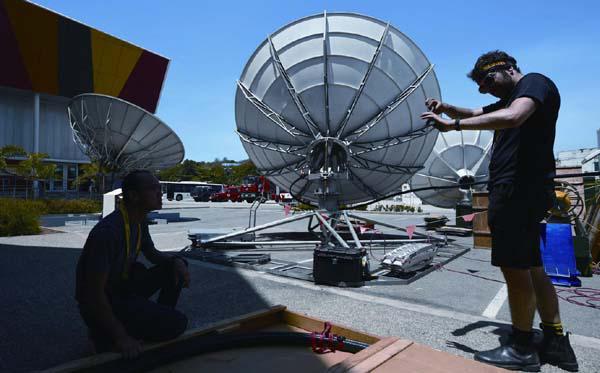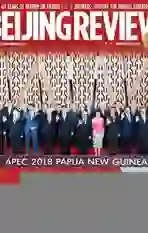SHOW OF UNILATERALISM
2018-12-15ByJonTaylor
By Jon Taylor


With U.S. President Donald Trump absent, Vice President Mike Pence substituted for him at the Asia-Pacific Economic Cooperation (APEC) Economic Leaders Meeting in Port Moresby, Papua New Guinea, and the East Asia Summit hosted by the Association of Southeast Asian Nations (ASEAN) in Singapore. Trumps decision raised legitimate questions about U.S. commitments and reliability in the region. Why did Trump choose to skip the meetings? And what did this say about his attitude and policy toward both the meetings and the region in general?
Simply stated, Trump made a big mistake skipping the meetings, giving the impression that the United States cares less about the Pacific Rim region, and, in particular, nations such as Papua New Guinea, Micronesia, and the Cook Islands than China, Japan and Australia.
Departing U.S.
Combine this snub with the U.S. withdrawal from the Trans-Pacifi c Partnership trade agreement and its ongoing trade war with China, and it becomes even more apparent that AsiaPacific is far from the vital region the United States and Trump claim it to be. Trumps attendance would have underscored U.S. commitment to the region. It could have also provided an opportunity for Trump and Chinese President Xi Jinping to meet before the G20 Summit in Buenos Aires, Argentina.
Instead, Trumps unwillingness to attend meetings, shape the agenda, shore up U.S. alliances and deepen U.S. ties in the region pre- vailed. Trump is well known for his reluctance to attend multilateral meetings and instead prefers bilateral gatherings such as his meeting with North Korean leader Kim Jong Un. He does not believe in multilateralism, while APECs goal is to promote mutual trade and cooperation.
Trump, who attended the gatherings last year but departed early, sent Pence instead. This did little to deter skepticism that Trumps“America First” policy is of greater importance to him and his administration than engaging in the spirit of APECs work and enhancing cooperation and trade to engender inclusive growth. It is unlikely to occur to Trump that APEC member economies account for almost half of the worlds trade.
Personal interactions and the symbolic commitment of attending such events are important to both the leaders and populations of the Asia-Pacific region. If the United States was really concerned about maintain- ing its relevance on a global stage, Trump should have been in attendance, engaging with his counterparts and illustrating the U.S. commitment to the region in a speech to the delegation. By contrast, Xi not only attended the APEC Economic Leaders Meeting, but he also delivered a key speech at the APEC CEO Summit and held meetings with several Asian and Pacifi c leaders, including eight Pacifi c Island states. His appearance undoubtedly overshadowed Pences presence. Pence pointedly skipped Xis APEC speech and restated Trumps hardline stance that the United States would keep tariffs on China until it addresses concerns outlined by his administration.

This year, the APEC Economic LeadersMeeting ended without a communiqué for the first time in history. The primary area of contention was the insistence by one country—likely the United States—that the outcome document should ref lect its own stance on the reform of the World Trade Organization. The fact that they could not find an agreement is emblematic of the impact of Trumps protectionist policies and his role in breaking down international institutions.
What does this mean for Asia-Pacific and U.S. interests in the region? The answer is unknown, due in large part to Pences over-thetop rhetoric in his APEC speech and Trumps reputation for being both mercurial and unpredictable. Assuming that Pence was on-point and enunciating Trumps “America First” stance that emphasizes U.S. hegemony, unilateralism, and anti-globalization protectionism, then the answer becomes quite clear: The United States wants Asia-Pacific nations to choose between the United States and China.
The rhetoric from the United States demonstrated a level of disrespect toward the regions nations that have chosen to facilitate strong economic ties with China out of their own national interest. For Pence, to try and project interest in Chinese investments for economic development into Cold War-style opposition is ham-fisted, patronizing, and embarrassing. Simply put, Pence blundered.
The Chinese vision
In light of Trumps non-appearance and disinterest in diplomacy and foreign relations in general, as well as in APEC and ASEAN, the meeting between Xi and Trump during the forthcoming G20 Summit now carries much more weight. But will that meeting be any dif- ferent from Pences appearance at APEC? While we can hope that Trump will arrive prepared to work together, mute his bombast that trade wars are easy to win, and promote collaboration between the worlds largest two economies, the reality is that his personality, his trade war against China and his aggressive rhetoric do not bode well for success. Hope is minimal even with Chinas demonstration of patience on the trade dispute and willingness to work with the United States to arrive at a broad consensus.
Trumps personal disinterest and his foreign policy teams hands-off approach toward Asia-Pacific relations have served to diminish confidence in U.S. resolve among its non-allied partners in the region, particularly in Southeast Asia. Trump has severely weakened U.S. influence in the world without getting anything of value in exchange. This decline has the potential to be permanent. It may take decades for the United States to recover from Trumps deliberate diminishment. In retrospect, it may be seen as one of the worst legacies of Trumps presidency.
The APEC Economic Leaders Meeting offered the world contrasting views of multilateral cooperation and economic globalization, of“America First” vs. Chinas win-win cooperation. Xis speech at the meeting was dramatic. Pences speech was reactionary. Xis speech captured the spirit of the moment that the world is changing and that we have reached a crossroads. Pences speech underscored U.S. determination to go it alone and erect barriers to economic cooperation and global gover- nance. Xi noted that in an era of globalization, using manmade barriers to obstruct close ties between countries runs against economic logic and historical trends. Pence reiterated that“in the days ahead, the United States will continue to put America first,” which means that the White House will not only do so in terms of concrete benefits, such as economic and trade deals, but also in defining the rules and principles.
Trumps “America First” nationalism, his contempt for multilateral alliances, and his “Art of the Deal” policy approach pushed by his vice president at the APEC Economic LeadersMeeting were a stark contrast to Xis vision for China as a champion of free trade, multilateral cooperation and economic globalization, particularly among the nations of the Asia-Pacific region. The U.S. approach is not the way to build a winning ideological and geopolitical strategy. Trump and his administration were intent on drawing some sort of line in Papua New Guinea by deliberately picking a fight with China. But the United States incoherent efforts via Pence to disregard Chinas efforts at providing economic and infrastructure development to lesser developed nations did not come across as an effective way to wage soft diplomacy. The strategy is doomed to fail.
